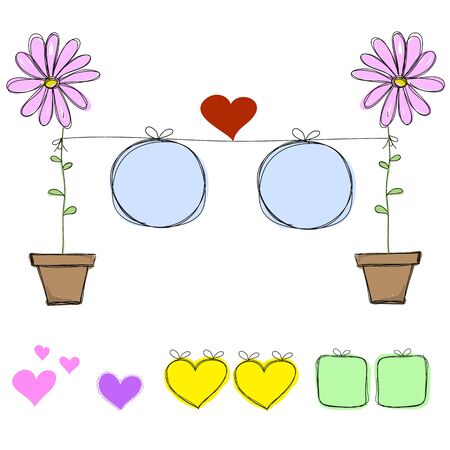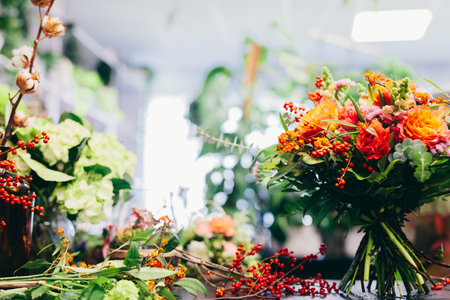1. Understanding Your Growing Space
Before you plant a single seed, it’s important to get familiar with your outdoor space. A thoughtful assessment of your yard can make all the difference in designing a cut flower garden that delivers armfuls of blooms all season long. Let’s break down what you’ll want to look for.
Assessing Your Yard’s Dimensions
Start by measuring your available space. Grab a tape measure and jot down the length and width of the area where you’d like to grow flowers. Knowing these numbers will help you plan rows, beds, and paths without overcrowding.
| Yard Area | Length (feet) | Width (feet) | Total Square Feet |
|---|---|---|---|
| Main Garden Bed | 20 | 8 | 160 |
| Side Patch | 10 | 4 | 40 |
Sun Exposure: The Key to Thriving Flowers
Most cut flowers love full sun, which means at least 6-8 hours of direct sunlight each day. Observe your yard throughout the day to see which spots get the most light. Make a simple sketch or use your phone to note where shadows fall from trees, fences, or your house.
Quick Tip:
If you’re not sure how much sun an area gets, spend a sunny Saturday checking on it every few hours—morning, noon, and late afternoon—and write down what you see.
Soil Quality Matters
The foundation of any productive flower garden is healthy soil. Dig a small hole and check if your soil is sandy, clay-heavy, or nice and loamy (the sweet spot for most flowers). You can also pick up an inexpensive soil test kit at a local garden center to check pH and nutrient levels.
| Soil Type | Description | Ideal for Cut Flowers? |
|---|---|---|
| Sandy | Drains quickly, feels gritty | Add compost to improve water retention |
| Clay | Dense, sticky when wet, hard when dry | Add organic matter for better drainage and texture |
| Loam | Mixes sand, silt, clay; crumbly and dark | Perfect for most flowers! |
Your Local Climate Counts Too
Your USDA Hardiness Zone tells you what plants will thrive in your region. Check your zone online by zip code if you’re not sure. Understanding frost dates will help you time planting just right so tender seedlings don’t get nipped by a late cold snap or early fall chill.
Checklist for Planning Your Cut Flower Garden Location:
- Measure available space for beds and pathways
- Track sunlight patterns throughout the day and seasons
- Test soil type and quality; amend as needed for flower-friendly conditions
- Find out your USDA Hardiness Zone and average frost dates for your area
By carefully considering these aspects before you start digging, you’ll set yourself up for a bountiful harvest—and a backyard bursting with color all summer long.
2. Choosing the Right Flowers for Your Region
When you’re dreaming up the perfect cut flower garden, it’s tempting to pick every gorgeous bloom you see on Pinterest or in your favorite seed catalog. But if you want a garden that’s truly bursting with flowers all season long, it’s essential to select varieties that thrive in your specific USDA hardiness zone. This not only makes your garden easier to care for, but also ensures you’ll have plenty of blooms to fill vases, share with friends, and brighten up your home.
Why Your Hardiness Zone Matters
The USDA hardiness zone map helps gardeners across the U.S. figure out which plants will survive and thrive in their local climate. Picking flowers suited for your zone means less worry about late frosts, scorching summers, or surprise losses after a cold snap. If you’re not sure about your zone, you can find it quickly online using your zip code.
Finding Flowers That Fit Your Family’s Style
Beyond just surviving, think about what kinds of flowers fit your family’s vibe and the spaces you’ll use them in. Do you love big, bright sunflowers for a kitchen table? Are you more into soft pastels and sweet scents for bedroom bouquets? Consider vase life too—some blooms last just a few days while others keep looking fresh for over a week.
Popular Cut Flowers by Hardiness Zone
| USDA Zone | Top Choices for Cut Flowers | Vase Life (Days) | Family Style Tips |
|---|---|---|---|
| 3–5 (Cooler North) | Tulips, Peonies, Snapdragons, Sweet Peas | 5–10 | Classic spring bouquets; perfect for early summer celebrations |
| 6–7 (Midwest/Northeast) | Zinnias, Dahlias, Black-eyed Susans, Coneflowers | 7–14 | Bold colors for cheerful kitchen or porch arrangements |
| 8–10 (South/West Coast) | Cosmos, Lisianthus, Sunflowers, Celosia | 6–12 | Bright summer mixes; great for casual dining tables and gifts |
Tips for Making Your Selection
- Mix annuals and perennials: Annuals like zinnias bloom fast and give instant color; perennials such as peonies come back bigger each year.
- Add foliage: Don’t forget greens like eucalyptus or dusty miller—they add texture and help fill out arrangements.
- Think about succession: Plant early-, mid-, and late-season varieties so you always have something blooming.
- Involve the family: Let kids pick a row of their favorites or choose special colors together—it makes harvesting even sweeter!
Selecting region-friendly flowers doesn’t just mean less work—it means more joy at harvest time. With the right mix tailored to your climate and style, every bouquet from your backyard will feel extra special.

3. Garden Bed Layouts for Easy Access and Maintenance
When planning your cut flower garden, the layout of your garden beds can make a big difference in how easy it is to plant, maintain, and harvest your blooms. The right setup not only maximizes your harvest but also keeps chores like weeding, watering, and deadheading manageable throughout the growing season. Let’s take a look at three popular bed designs—row, block, and raised beds—and see how each one can help you get the most out of your cut flower patch.
Row Planting: Simple and Classic
Row planting is a tried-and-true method, especially for beginners or anyone with a larger space. Rows make it easy to walk between plants, set up irrigation, and quickly spot any issues like pests or disease. This style works well for straight-stemmed flowers such as zinnias, snapdragons, and sunflowers.
| Pros | Cons |
|---|---|
| Easy access for planting and harvesting Simple to weed and mulch Ideal for long-handled tools |
Takes up more space May require paths between each row Less efficient if space is limited |
Block Planting: Packing in More Flowers
If you’re working with a smaller backyard or want to maximize every square foot, block planting could be your go-to method. In this system, flowers are planted closer together in rectangular or square blocks instead of long rows. This approach helps shade out weeds and makes watering more efficient since plants are grouped tightly.
| Pros | Cons |
|---|---|
| Makes the most of small spaces Cuts down on weeds due to dense planting Efficient use of water and fertilizer |
Can be harder to reach center plants Airflow may be reduced (watch for fungal diseases) Some crops still need spacing for best results |
Raised Beds: Tidy and Accessible
Raised beds are becoming increasingly popular for home gardeners who want a neat look and better soil control. By elevating the soil above ground level (usually within wooden frames), you can improve drainage, warm up the soil faster in spring, and keep pathways clear of mud after rainstorms. Raised beds are ideal for anyone with mobility challenges or poor native soil.
| Pros | Cons |
|---|---|
| Easier on your back and knees Great drainage and soil quality control Beds stay tidy year-round Perfect for succession planting small batches throughout the season |
Slightly higher upfront cost (building materials) Beds may dry out faster in hot climates You’ll need space to walk all the way around each bed |
Choosing What Works Best For You
The best layout often depends on your available space, local climate, and personal preferences. Some gardeners even combine two or more layouts to suit their needs—using rows for tall sunflowers along a fence line while dedicating raised beds to delicate annuals near the patio. No matter which design you choose, remember to keep paths wide enough (18–24 inches) so you can move comfortably with buckets or baskets when it’s time to gather armfuls of fresh-cut flowers.
Succession Planting and Season Extension Strategies
If you want your cut flower garden to provide armfuls of fresh blooms all season long, a little planning goes a long way. Succession planting and season extension techniques help keep your garden productive from the first days of spring through early fall. Here’s how you can keep the flowers coming for months on end.
What Is Succession Planting?
Succession planting simply means sowing seeds or transplanting seedlings in intervals rather than all at once. This ensures that as one batch of flowers finishes blooming, another is just getting started. For example, instead of planting all your zinnias in May, try sowing a new row every two weeks through early summer. That way, you’ll always have something in bloom for bouquets or sharing with friends and neighbors.
Sample Succession Planting Schedule
| Flower Type | First Planting | Second Planting | Third Planting |
|---|---|---|---|
| Zinnia | Early May | Late May | Mid June |
| Sunflower (branching) | Mid May | Early June | Late June |
| Cosmos | Early May | Late May | Mid June |
| Dill (for filler) | Early April | Late April | Mid May |
Extending Your Growing Season: Tools and Tips
The weather doesn’t always cooperate, but you can still coax out extra weeks of blooms by using some simple season extension tools. Low tunnels made from hoops and row cover fabric help warm the soil and protect young plants from chilly nights in early spring. In hot climates, shade cloth keeps cool-loving flowers like snapdragons or sweet peas going longer into the summer.
Popular Season Extension Tools
| Tool/Material | Main Use | When to Use It |
|---|---|---|
| Low Tunnel (Hoop House) | Protects plants from frost and warms soil in spring/fall. | Early spring & late fall (before/after frost dates) |
| Shade Cloth (30-50%) | Cools down beds for heat-sensitive flowers. | Mid-summer during heat waves or full sun exposure. |
| Row Cover Fabric (Floating Row Cover) | Keeps pests off seedlings and provides light frost protection. | Soon after direct seeding or transplanting outdoors. |
| Mulch (Straw, Grass Clippings) | Keeps soil moist and regulates temperature. | Soon after seedlings are established. |
Simplified Scheduling for Busy Gardeners
You don’t need fancy software to keep track of your plantings—just a wall calendar or a notebook works great! Mark out when you’ll sow each batch, note expected bloom times, and jot down when you harvest. Even better, involve the whole family by letting kids draw pictures or use stickers for planting dates—turning gardening into a team effort makes it even more rewarding.
If you plan ahead with succession planting and use easy season extension tools, your cut flower garden will reward you with color and beauty from spring right through fall. There’s nothing quite like gathering a fresh bouquet from your own backyard week after week!
5. Integrating Pollinator-Friendly and Companion Plants
If you want your cut flower garden to truly thrive and keep producing beautiful blooms, it’s essential to think beyond just flowers. Adding pollinator-friendly and companion plants not only helps boost your harvest, but it also supports the overall health of your garden. In the U.S., integrating native plants and aromatic herbs attracts beneficial insects—like bees, butterflies, and ladybugs—that keep pests in check and encourage pollination.
Why Native Plants and Herbs Matter
Native plants are adapted to your local climate and soil, making them easier to grow and maintain. They also provide food and habitat for local pollinators, which is key for a successful cut flower garden. Herbs like basil, dill, or lavender offer double-duty: they deter unwanted bugs while drawing in the good guys.
Top Pollinator-Friendly Plants for American Gardens
| Plant | Type | Benefits |
|---|---|---|
| Milkweed (Asclepias spp.) | Native Perennial | Attracts monarch butterflies; great for bouquet filler |
| Echinacea (Coneflower) | Native Perennial | Draws bees & butterflies; adds structure to arrangements |
| Basil (Ocimum basilicum) | Herb Annual | Deters pests; can be used as greenery in bouquets |
| Dill (Anethum graveolens) | Herb Annual | Lures ladybugs & lacewings; airy look for cut stems |
| Lavender (Lavandula spp.) | Semi-Hardy Herb Perennial | Pleasant scent; brings bees & makes fragrant bouquets |
| Sunflower (Helianthus annuus) | Annual Flower | Feeds bees; bold focal point in arrangements |
| Zinnia (Zinnia elegans) | Annual Flower | Butterfly magnet; long-lasting cut flowers |
Companion Planting Basics for Your Layout
When designing your garden beds, mix these pollinator-friendly plants among your main cut flower rows. Place taller flowers like sunflowers or coneflowers at the back or center of beds, with shorter herbs and natives along the edges. This not only looks pretty but gives pollinators easy access throughout the season.
Sample Bed Arrangement Ideas:
- Zinnias + Basil: Zinnias attract butterflies while basil keeps aphids away from tender blooms.
- Dill + Snapdragons: Dill draws ladybugs that eat pests off snapdragon leaves.
- Coneflowers + Lavender: Both are drought-tolerant and create a bee-friendly border.
Tending Your Pollinator Patch
Avoid heavy pesticide use—let nature do its thing! Water consistently and deadhead spent blooms to keep flowers coming all summer. By weaving in native plants and helpful herbs, you’ll enjoy a healthier garden with armfuls of gorgeous, long-lasting stems for every vase in your home.
6. Irrigation and Pathways for a Family-Friendly Garden
When youre designing a cut flower garden layout with your family in mind, making it easy for everyone to participate is key. Whether you have little ones eager to help water or grandparents who love strolling through the blooms, practical paths and simple watering solutions make gardening more fun and accessible.
Designing Practical Pathways
Wide, well-marked paths are a must for any family-friendly garden. They help prevent trampling of delicate flowers and allow wheelbarrows, wagons, or strollers to move easily. Think about the following when planning your garden pathways:
| Pathway Feature | Why It Matters |
|---|---|
| Width (at least 24-36 inches) | Makes room for two people to walk side by side or for easy access with a cart. |
| Surface Material (mulch, gravel, stepping stones) | Keeps feet dry and mud at bay; mulch is soft on little knees and hands. |
| Clear Edges (bricks, wood, or edging tape) | Defines flower beds and keeps pathways tidy. |
| Gentle Curves | Adds beauty and invites exploration without sharp turns. |
Tips for Kid-Friendly Paths
- Add stepping stones with hand-painted designs for fun navigation.
- Use low-growing herbs like thyme along the edges—they smell great when stepped on!
Simple Watering Solutions
Keeping your flowers hydrated doesn’t have to be complicated or expensive. Choose an irrigation method that fits your familys routine and makes it easy for all ages to help out:
| Irrigation Method | Best For | How Kids Can Help |
|---|---|---|
| Soaker Hoses | Larger beds; even moisture | Turn the faucet on/off; check if hoses are working properly. |
| Drip Irrigation Kits | Precise watering; water conservation | Help lay out tubing; watch how drips work. |
| Watering Cans & Buckets | Small gardens; container plants | Scoop and pour water—perfect for little helpers! |
| Sprinklers | Covers big areas quickly | Move sprinklers around the yard (and maybe run through them on hot days). |
Quick Tips for Easy Watering
- Store watering cans at kid height so young gardeners can fill them up themselves.
- If using hoses, use lightweight versions that are easier to carry and coil.
- Create a watering schedule chart so everyone knows their turn—stickers work wonders for motivation!
A Garden Everyone Can Enjoy
The right pathways and irrigation systems make tending your cut flower garden safer and more enjoyable for every member of the family. With thoughtful design, everyone—from toddlers to grandparents—can pitch in, learn new skills, and celebrate each bloom together.


